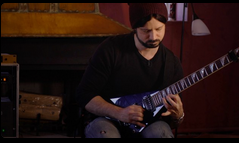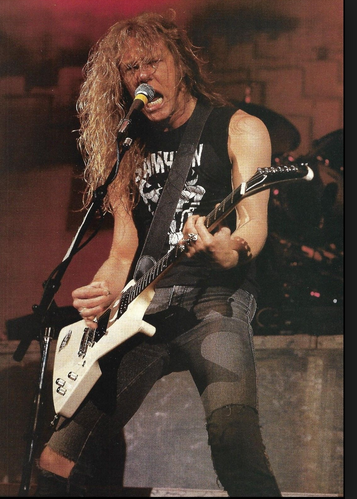Not sure if this has been discussed before but I have a theory on pickslant pref.
I think the ratio between upper arm to torso length will determine which pickslant somebody will likely favor.
On 1 extreme If you have very short upper arms and a very long torso when you sit with the guitar you will want to place it in the classical style so its between the legs and the neck is angled pretty high. The reason being that if you dont angle it this way your fretting wrist would have bend too far to reach the top strings or anything high on the neck. ie Terry Syrek:

If that’s the case I think that you will favor UWPS because in order to use DWPS your hand motion would almost need to move back and forth in an almost 90 degree angle which would be using a lot of flexion and extension instead of deviation. But UWPS, with your hand flat against the strings still allows for deviation.
On the other end if you have a short torso and long upper arms ie Hetfield you will want to place it in the rock style so its on the picking hand leg and the neck is angled lower. The reason being if the angle of the elbow allows the wrist to not have to bend through its entire ROM then you will be keeping the strings more horizontal and that will make DWPS more comfortable and more likely that you will naturally acclimate to it.

In fact you might favor DWPS because edge picking would still allow you to strike across the strings due to lower neck angle.
What do you think?

